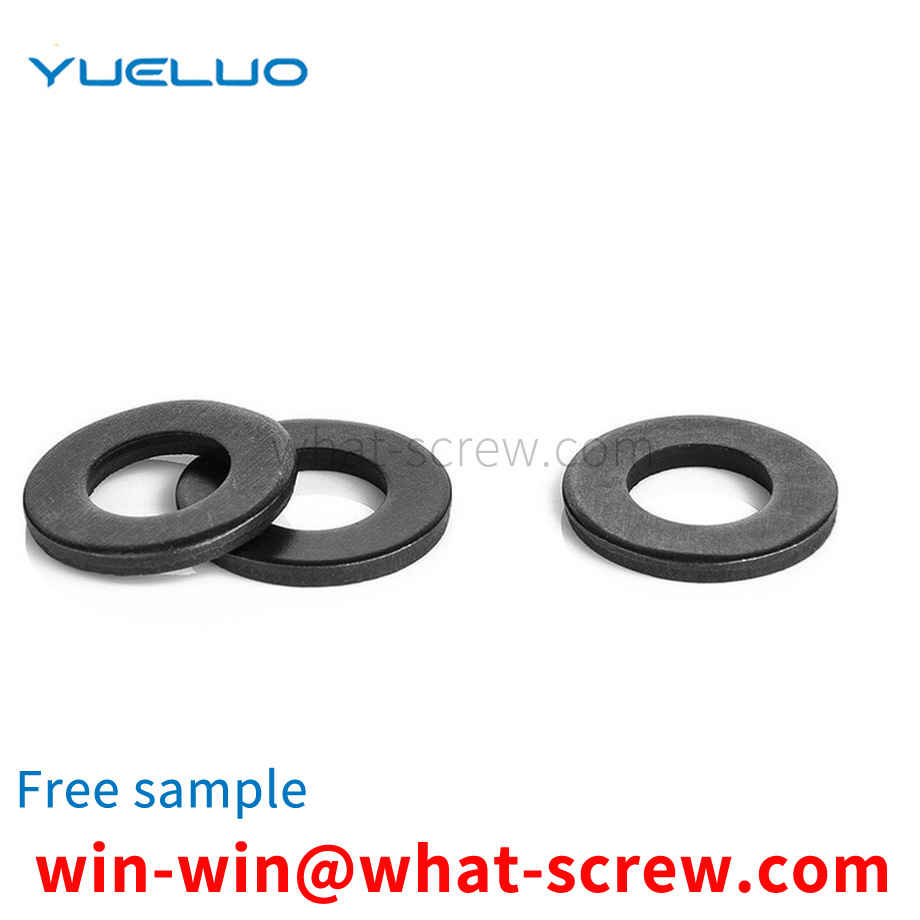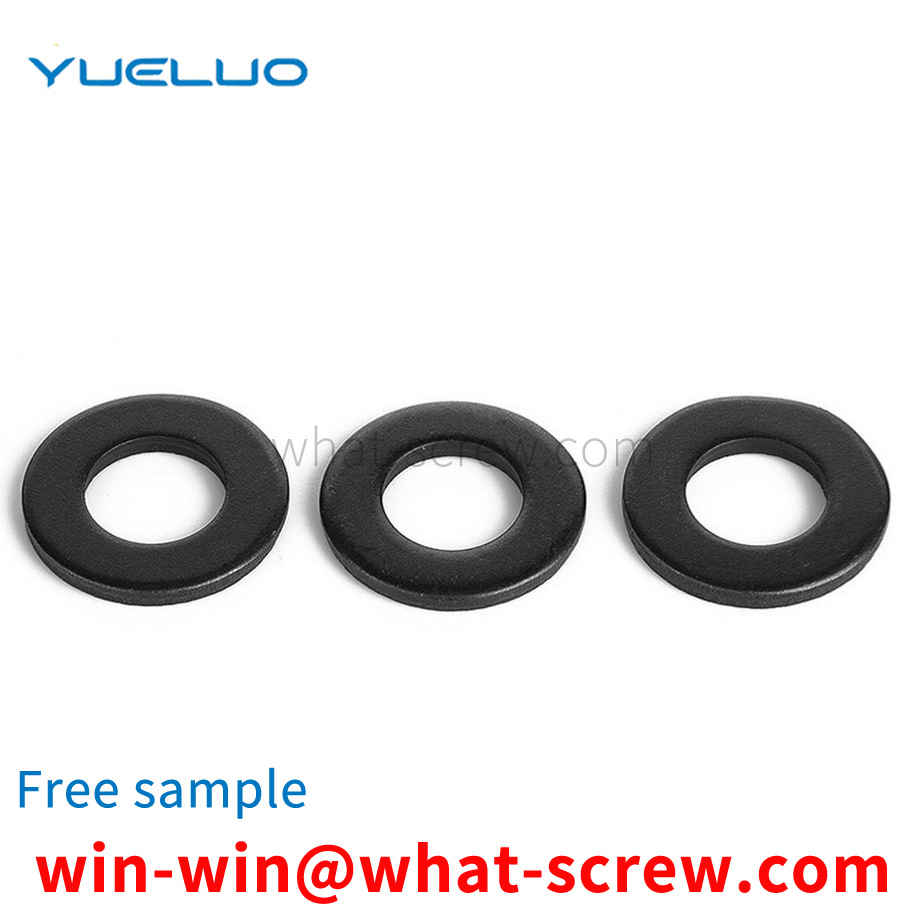Nuts are parts that tightly connect mechanical equipment. Through the inner threads, nuts and bolts of the same specification can be connected together. For example, M4-P0.7 nuts can only be connected with M4-P0.7 series bolts (in the nut). Among them, M4 means the inner diameter of the nut is about 4mm, and 0.7 means that the distance between the two threads is 0.7mm); the same is true for American products, for example, a 1/4-20 nut can only be matched with a 1/4-20 screw ( A 1/4 finger nut has an inner diameter of about 0.25 inches, and 20 fingers have 20 teeth in each inch).
However, for some thin-walled parts (such as metal material parts with a thickness of less than 1mm), the combination of cylindrical pins and edge-cutting positioning pins is used as the positioning method on the workstation equipment. In the process of automatic grasping by mechanical grippers, there are many The disadvantage is that if the positioning accuracy is to be met, it is inconvenient for the parts to be placed in the station utensils, and it is also inconvenient for the mechanical gripper to grasp the parts, and it is easy to cause the phenomenon of positioning pin hook parts when grasping the parts. Abandon the positioning and matching accuracy of pins and holes, but in the process of equipment assembly, due to poor positioning accuracy, another phenomenon will occur, that is, the positioning pins on the mechanical gripper are not aligned with the positioning holes of the workstation equipment, so that the equipment Frequent errors. As shown in Figure 2, when the mechanical gripper grasps thin-walled parts with an inclined angle, if a cylindrical pin is used, there must be a large gap between the cylindrical pin head and the part positioning hole, that is, the diameter A of the part positioning hole must be larger than Only when the diameter B of the cylindrical pin head is larger, the parts can be picked and placed.
T-slot bolts refer to the bolts installed in the T-slot. The installation process of T-slot bolts is usually as follows. When the T-slot (generally refers to the T-slot aluminum alloy profile) is set horizontally, the bolt The bolt head is placed in the T-slot in the horizontal direction, the bolt shaft is facing outward, and then the bolt is rotated 90 degrees axially, the bolt head becomes vertical and will not come out of the T-slot, and then install the mounting hole of the object Align the bolt rod and insert it and screw the nut on the bolt rod. During the tightening process of the nut, if the thread gap is small or the thread is damaged or there is dirt, the bolt will often rotate, and the rotation angle of the bolt is uncontrollable and impossible. Observe that when the rotation angle of the bolt is in the range of about 90 degrees, the bolt is in a state of being released from the T-shaped groove at any time. Even if the nut is tightened, the installation of the installation object is invalid and unreliable, and there is a serious safety hazard. , the actual situation is that when the rotation angle of the bolt exceeds 20-30 degrees, the installation of the installation object is already unreliable.
Gears, mechanical components with teeth on the rim that can continuously mesh to transmit motion and power, are mechanical parts with teeth that can mesh with each other. The gears used in industry are generally made of steel. The commonly used steels are quenched and tempered steel, hardened steel, carburized and quenched steel and nitrided steel. The strength of cast steel is slightly lower than that of forged steel, and it is often used in Larger-sized gears; gray cast iron has poor mechanical properties and can be used in light-load open gear transmissions; ductile iron can partially replace steel gears; plastic gears are mostly used in places where light loads and low noise are required, and are matched with them The gears are generally made of steel gears with good thermal conductivity.
Procurement and sales in the testing process know that the quality of screws is manufactured, not detected, but in manufacturing, we must try our best to make them as good as possible. But it is unlikely to be completely error-free and error-free. We all know that errors are unavoidable and can only be approached infinitely. Therefore, at this time, the quality inspection of the screw is required to improve the quality of the screw. At the beginning of ordering from screw wire material into the production of screw industry manufacturers, you must first check the wire diameter of the screw wire and the material of the screw. Generally, the wire diameter of the screw is measured with a caliper to measure the size of the wire diameter, whether it is suitable for self-ordering. Same size. After testing these, it is the testing in the production process, starting from the head of the screw, to determine the size of the head, the opposite side of the head, the diagonal angle, the depth of the cross groove, the tolerance range of the screw, and so on. These are checked with calipers. In the inspection of all aspects when rolling teeth, the main thing is whether the thread can pass the pass and stop gauge, and whether the screw thread can pass the gauge and stop. Next is the electroplating measurement problem. After electroplating, whether it meets the requirements of environmental protection and whether it can pass the time required by the salt spray. Tools include environmental testing machines and salt spray testing machines. In short, in the process of screw production and sales, there must be necessary tools to detect the quality of screws. The summary should be summarized as follows: calipers, hardness testers, salt spray machines, environmental testing machines, pass and stop gauges, etc. When producing and selling screws, there will be a screw specification and screw model. With the screw specification and screw model, we can understand what specification screw and what size screw the customer needs. Many screw specifications and screw models are based on national standard specifications and models. Generally, such screws are called ordinary screws, which are generally available on the market. There are some non-standard screws, which are not based on the national standard specifications, models and sizes, but are customized according to the standards required by the product materials. There is no stock in the general market at all. In this way, it is necessary to make drawings and samples.
We have many years of experience in the production and sales of screws, nuts, flat washers, etc. The main products are: spring pin cotter pin positioning pins, dome head bolts, double head screw screws, round cup screws and other products, we can provide you with suitable products Your fastener solution.



















 Service Hotline
Service Hotline




